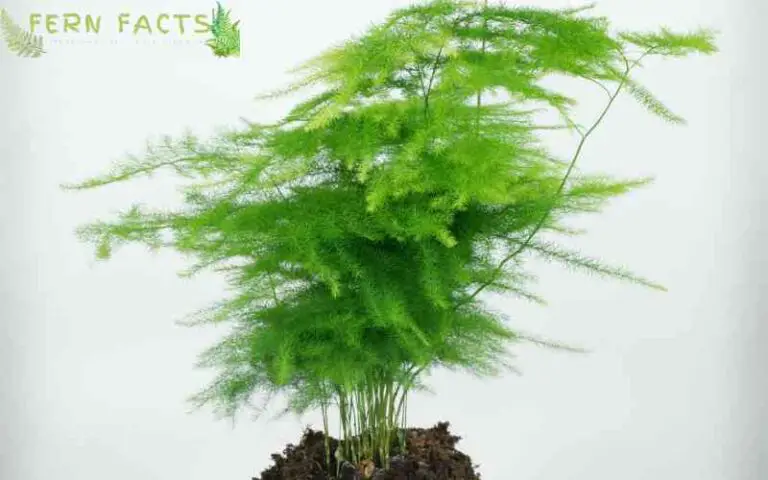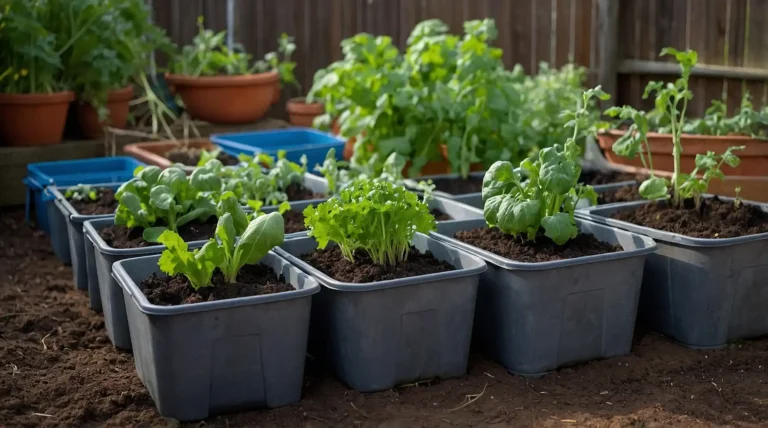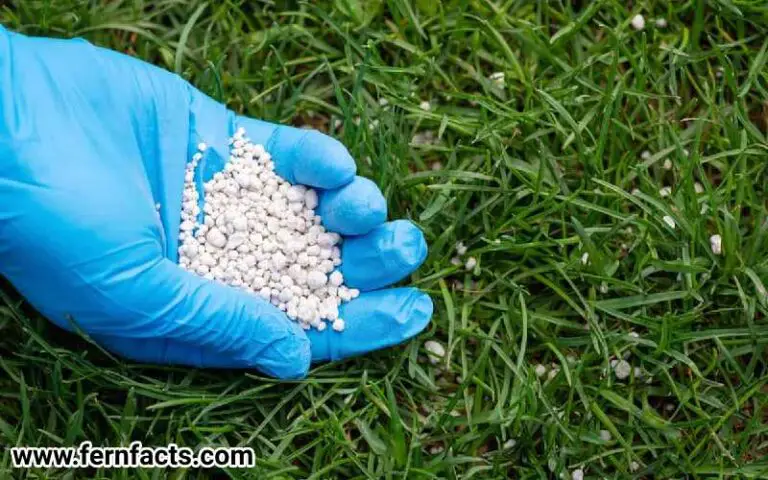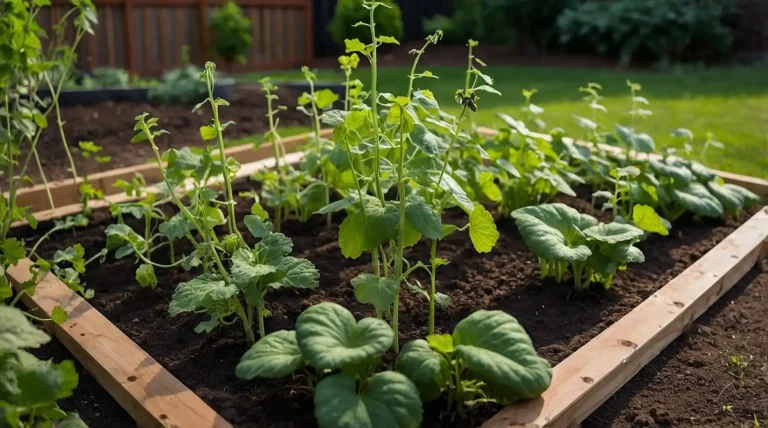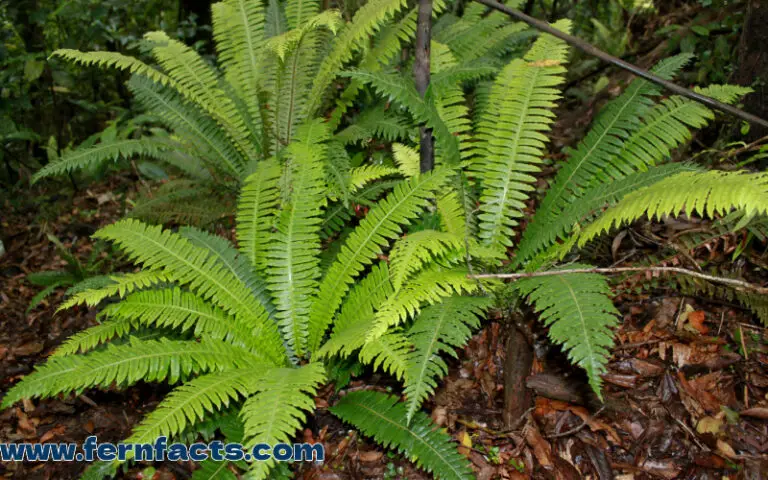How to Protect Your Bird’s Nest Fern: Pest and Disease Management
Bird nest ferns are one of the elegant touch ferns that are mostly used as houseplants. Their green lush fronds form the most appealing greenery to your house.
But what if you notice yellow and brown fronds on your plants? What if you spot white fuzzy webs on the stems? Well, Don’t be frightened.
In this article, I will give you overall guidance about birds’ nests, fern pests, and diseases along with solutions to cure those issues to have healthy green ferns. So let’s not wait anymore.
Common Bird’s Nest Fern Pest and Diseases
Let’s go through some common problems of Bird’s Nest ferns that you might encounter while growing them as houseplants.
1. Scales
Scales are one of the known pests that affect bird’s nest ferns mostly. These tiny scales have white gray or tan shells with their rigid body.
These scales don’t move around much. As a result, they are often mistaken as spores. But these scales usually sit in the fronds and suck the moisture from the foliage and make them dull brown gradually.
As a result, fronds will be deformed and discolored over time.
2. Spider Mites
Spider mites are another common pests and insects that are mostly spotted around Bird’s Nest ferns.
Ferns usually get affected by these spider mites if they remain dry and dusty most of the time.
Additionally, if you forget to water your plants then there will be more chance that your Bird’s nest ferns will be affected by these mites due to the underwater situation.
As these spiders are tiny, sometimes it’s hard to see them. But you will notice white thin spider webs on your plants which is a sign that your ferns have already been affected by spider mites.
3. Mealybugs
Mealybugs are small white insects or swarms that have foliage veins. These small white bugs sit on the plant’s stem or fronds and suck out the juice from the plants.
Afterwards, they leave a white waxy powdery substance that attracts ants as well. Hence, these Mealybugs reduce the plant’s growth and cause plants to turn yellow and wilt.
4. Aphids
Aphids are another common pests which affect Bird’s nest fern’s health. These aphids have several colors such as green, white, brown, and black.
Besides, these tiny insects create maximum suffering for the plants along with damaging the plants. Because of them ferns can have distorted and curled foliage.
Usually, they hide underneath the fronds. That’s why inspection is necessary to identify these problems.
5. Whiteflies
Whiteflies are tiny little flies that look like gnats. They usually feed on the plants and lead the fronds to have a pale yellow and whitish appearance.
6. Fungus Gnats
Fungus gnats are also common pests in the greenhouse. Here, the female fungus gnats lay eggs on the moist soil and larvae hatch on the plant’s roots.
A few weeks later, an adult emerged and flew around the house, annoying everyone. They can also stunt the plant’s growth.
7. Foliar Nematodes
Foliar nematodes are microscopic worms that infest Bird’s nest ferns. They can cause the fronds to curl and discolor.
If the situation gets worse, they can also lead the Bird’s nest ferns to have browning tips and dropping leaves as well.
8. Blight
Blight is a fungal or bacterial pathogens that attack the plant’s vascular systems and lead to the tissue of the plant’s death.
If the plants are affected in a large area then it’s known as blight. Blight can severely weaken the plants which ultimately kills the plants gradually if they are not treated immediately.
However, there are a few varieties of Blight, such as:
- Southern blight: Southern blight affects more than 200 species and is mostly common in tropical plants in the US. They have affected various trees, shrubs, vegetables, and ornamental plants like ferns. In these diseases, the fronds become yellow, wilted, and later root rot along with fungal infection, and seed-sized bumps on the plants.
- Bacterial leaf spot: This bacterial leaf spot is mostly created by localized bacterial infection. Ultimately this bacterial infection causes blight to the ferns. Bacteria like Pseudomonas and Xanthomonas can cause deep dark green spots on the ferns which gives soaked foliage appearance to the plants. After, the plants become tan, brown, and black and die eventually.
- Botrytis blight: This blight is also known as gray mold that gives dusty patches like tan and gray on the plant’s foliage. Since they are contagious, it won’t take time to spread the infection from affected to nonaffected fronds. Ultimately it will spread all over the plants and kill the plants as well.
9. Powdery Mildew
Powdery mildew is another fungus disease of birds nest ferns which occurs due to dry and warm conditions.
If you notice a white-gray powdery layer on your plants then definitely your plants are being attacked by this powdery Mildew.
From this powdery formation, tiny bodies start to appear on the foliage which first has a white color then becomes yellow, brown, and lastly black.
Later on, the infected fronds or foliage distorted and discolored due to this fungal disease.
Pest and Disease Management of Bird’s Nest Ferns
To cure and prevent those pests and diseases you need to use pesticides and insecticidal solutions.
Let’s look for some insecticides and pesticides that you can use to eradicate these pests and fungus diseases.
Insecticidal Soap
To get rid of spider mites, aphids, and mealybugs you can use insecticidal soap. This soap is made from potassium, salts, and oils which will help to kill those insect bodies on the plants.
Additionally, you can also use dish soap as a great substitute however it’s not as effective as insecticidal soap. Use insecticidal soap once a week or you can also use it every 4 to 7 days if the situation gets worse.
Pesticides
You can also use pesticides to kill those insects and pests from your plants. However, make sure you use the pesticides by following all the guidelines.
Because it can affect humans and animals if it is somehow misused. Each pesticide has different applications; hence you read all the instructions before you apply it to your plants.
Horticultural Oils
Horticultural oils are also another great solution to terminate those pests and insects. It suffocates insects such as mealybugs, whiteflies, aphids, spider mites, and so on.
These oils gradually block the breathing holes of those pests’ bodies and kill them gradually by suffocating them.
Few oils work miraculously to eradicate the breeding and egg-laying cycle of those insects. Since most oils are petroleum-based, they can easily kill those pests.
However, some oils are also plant-based such as neem oils. This neem oil also works phenomenally to terminate nematodes from plants.
How to Use Pesticides and Insecticidal Solutions for Bird’s Nest Ferns
Since pesticides and insecticidal solutions come with comprehensive instructions. So you can read those instructions for better acknowledgments.
However, these are quite a lengthy process to use and you have to be consistent while treating your bird’s nest ferns. Otherwise, they will be affected again if pests are not terminated fully.
Firstly choose which treatment you are going to use for your ferns. Make sure you choose a treatment that targets your ferns’ specific pests and diseases.
Since different treatments have different time durations and application methods, therefore follow the label instructions carefully. Replay the solutions while maintaining consistency in them.
Since most pest treatments don’t show the result immediately, Give some time to your consistent treatments. You’ll notice the result over a period.
- Learn More About How to Care for and Nurture Flowering Ferns.
Extra Care and Managing Tips
An Ideal growing atmosphere can be a good option to thrive your bird’s nest ferns in your house. If you can give them an ideal growing atmosphere, your ferns will be less affected by pests and diseases.
Hence, giving them their ideal environments is your first line of defense mechanism to protect your ferns from those pests and diseases.
Try to give them moist and damp soil because dry soil can invite spider mites and powdery mildew. Make sure you use rich organic soil with well-drained so that water doesn’t log into the soil.
Besides, try to use soil with a pH level between 5 to 6. 6 to balance the acidic level. Moreover, use a pot or container that has more than one drainage hole so that the water doesn’t log into the pots.
It will reduce the rot diseases of the roots which can lead the plants to have fungal diseases as well.
Furthermore, place your bird’s nest ferns on the north-facing or east-facing window under indirect sunlight. Similarly, keep the room’s temperature around 70 to 80° F.
Don’t let the temperature fall below 60°F because it can invite pests and diseases.
At the same time, ensure you properly feed your plants during their growing seasons. Try to use liquid fertilizer or water-soluble fertilizer at half strength in the ratio of 20:10:20 (NPK) feed them once a month during the spring and summer seasons.
Avoid feeding them in the winter seasons since they need minimal attention during the dormancy period. Lastly, pruning and repotting can give your Bird’s nest ferns additional growth.
Wrapping Up
On final thought, Bird’s nest ferns are not prone to pests and diseases. However, they can be affected by spider mites, mealybugs, whiteflies, aphids, nematodes, and a few other pests if they don’t meet their required ideal conditions.
Nonetheless, you can prevent and cure those pests and diseases by using insecticides, pesticides, and Horticultural oils.
Moreover, you can give them a thriving healthy life by monitoring and addressing all the problems swiftly along with giving them minimal caring and growing environments.


